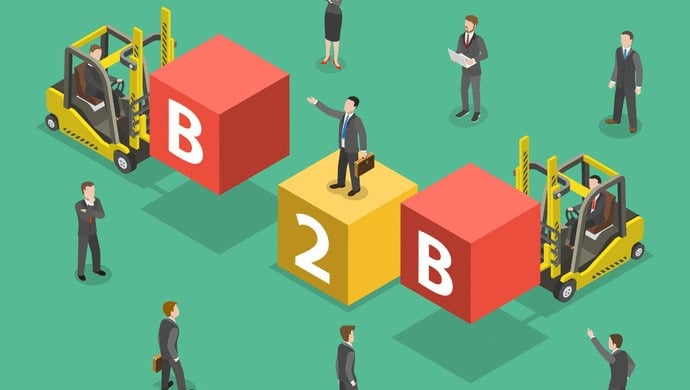B2B marketing is undergoing a significant transformation

Typically, the sales team is bestowed with the responsibility to drive sales. You might be already familiar with the folks from the sales team making countless cold calls and generating leads. In most cases, B2B decisions rely heavily upon the information and intel provided by the sales representatives.
However, times are changing.
Today, B2B vendors are bidding farewell to old-school business practices. At present, it is impossible for businesses to flourish in the absence of technology. It is something that forms the heart and soul of a contemporary business house.
The idea behind embracing newer sets of technology is quite simple. Businesses want to target consumers and vendors across geographical boundaries. It goes pretty much without saying that technological advancements make it easier for parties to interact with consumers and businesses.
Here are a few monumental changes that have taken place in the world of B2B marketing in the past five years.
Sales reps have taken a backseat
Of late, B2B buyers have realised that going personal can yield better business results. Today, companies are investing heavily in order to conduct product research and create a B2B content strategy. Also, firms prefer conducting online searches before asking the sales reps to step in.
To be honest, the number of businesses indulging in online discussions have increased by leaps and bounds. Forums such as Quora are being used extensively to get recommendations and suggestions.
Also Read: A guide to wading through the organic reach demise on social media
According to a report, around 60 per cent of the B2B buyers prefer not to get in touch with sales representatives. Well, going online and getting yourself accustomed to the various developments taking place in the B2B sphere is way easier than getting in touch with a sales rep. over a phone call.
So, it can be said that sales pitches and sales representatives have taken a backseat. Contemporary businesses rely on research validations through peer networks before asking the sales guys to take over.
The number of decision makers have increased
Recently, the Harvard Business Review reported that, on average, approximately seven people involved in making B2B purchases. The number was under six until a couple of years ago.
Content strategies are being overhauled
Moving on, it certainly would not be a hyperbole to say that the B2B content strategy has also witnessed some monumental changes. Over the last few years, video marketing seems to have taken the front seat.
Reports show that around 80 per cent of B2B buyers prefer watching a video before purchasing anything. Furthermore, the report also states that video content consumption has increased by almost 50% in the last few years.
Some food for thought
Content has to be at the heart of all of your operations. The contemporary B2B marketing strategies cannot provide you with a favourable output if the content you prepare is not in tandem with the needs and requirements of your target audience.
Content is the undisputed king
Content forms the heart and blood of contemporary B2B marketing strategies. More often than not, it is noticed that content is prepared and uploaded. After it’s uploaded, it’s read by audiences.
What happens after that? The readers find many interesting pieces of content and start reading them. Your content is eventually forgotten.
In order to ensure that the content you’ve prepared stays with your target audience, you need to practice you should try upcycling your content.
What exactly does upcycling mean?
Upcycling helps you build on the previously-published posts. For example, You can reblog a post that was shared three months ago. This way, you’ll be able to enhance the shelf life of a blog post that was written long back. The readers who have already read the post would have some sepia-tinted memories about the post.
Also Read: Malaysia Tech Week 2019 brings together the best of the country’s tech ecosystem
You can also post the same message (content) on various types and kinds of media channels in order to widen the visibility of the post. You can prepare a PowerPoint Presentation and upload it on Slideshare. The same blog post can go on Linkedin as well. You can even post the same content in the form of a video tutorial on Youtube. Add an infographic to it. This way, you’ll be able to add an element of freshness to the content that has already been used.
Conclusion
The bottom line is this — we’re living in the digital age now. Everybody is connected. You can share a post on social media and it gets viral overnight. Everything is happening in real time.
Content is the driving force behind each and every B2B marketing strategy. Keep content at the heart of everything you do and consumers will relish in an interesting story. A story they can relate to. Give them a story and they’ll be hooked.
—
e27 publishes relevant guest contributions from the community. Share your honest opinions and expert knowledge by submitting your content here.
The post The changes B2B marketing has felt over the past 5 years appeared first on e27.